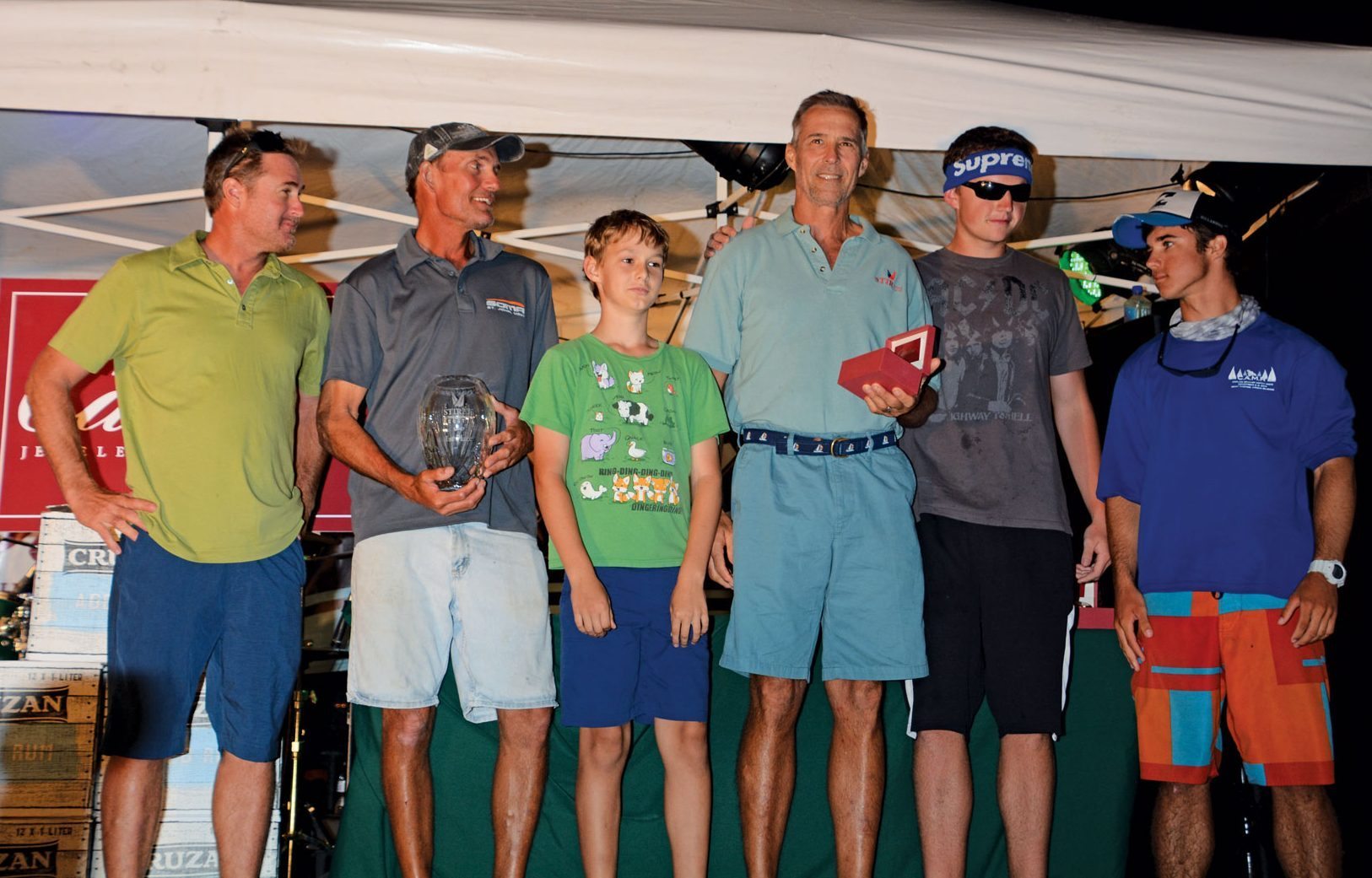Modest and soft-spoken, St. Thomas boat builder Morgan Avery is one of those folks whose actions speak louder than words. In a 20-year career that began while he was in high school, Avery has rebuilt, built anew and innovated a number of craft, most recently the IC-24 design that is now dominating one-design racing in the Virgin Islands. “How a boat moves through the water, how it responds to different conditions has always intrigued me,” Avery says.
Born and raised on St. Thomas, Avery grew up around boats and lived aboard a houseboat as a young boy. His father, Dick Avery, arrived with wife Marianne to the islands from Maine in 1958, where Dick then started the first charter company out of Frenchtown. “When I wasn’t in school, I was out on boats. It mesmerized me, whether it was working on boats with my father, driving the charter boats into the dock or watching boats pulled out of the water on the marine railway,” Avery explains.
IC24 Column: IC24 Dry Storage Cradles Ideal for Hurricane Season
He built his first boat, an 11-foot dinghy, while in 10th grade. The boat, which he named Waver, was owned by photographer Tim Wright at one time and is now still in use by yet another owner.
Then, he rebuilt a dinghy for a friend and received pay.
“It was fun to make my own money. I never thought I’d do this professionally. But, I got decent at it the more I did it,” Avery says.

from right) stands on the
podium after winning the
IC24 class at STIR 2016.
Rosenberg and Morgan Avery (second from left), innovated the IC24design that was first launched in 2001. Photo: Dean Barnes
Over his lifetime, Avery has become a proficient board sailor, power boater and sailor. “I was fortunate to have Peter (Holmberg) take me aboard with him on the match racing circuit. It was a struggle in the beginning because the competition was tough. The first win was special; so were the next few. In some events, I was happy that we placed near the top, but Peter always encouraged us to try harder and place higher.”
Cruising Tales: Brainless Boating Invades the US Virgin Islands
Avery has transplanted this philosophy to his boat building. This has made for his unique rather than cookie-cutter approach. “I’m always trying to think of ways to do things better or quicker. In some cases it’s a second guess or instinct. I don’t always use the same method. When I’m fixing a boat and have to reshape it back, it’s something like being a sculptor. I seem to have an eye for it and I take after my father in this respect. When I’m building something new, I get ideas by looking at boats out on the water. I’ll jot the ideas down on paper. Then if it looks okay, I’ll transfer it to plywood and build the mold.”
It was Avery’s eye for design, along with that of his fathers, which turned Chris Rosenberg’s vision for an easy-to-sail one-design boat into reality. “The (J) 29s were gone and Chris wanted to get one-design racing going again. First we looked at Colgate’s and Sonar’s. The J/24 had everything we wanted, but the cockpit wasn’t comfortable. So my Dad and I designed the conversion. We kept the cost down by making it as simple as possible, yet a design that was highly competitive,” he explains.
One of Avery’s latest projects is a just-for-fun runabout. “It has a Prindle 19 hull. What makes it different is a solid deck and roof over top. There’s a middle pontoon, a sort of a trimaran that adds stability. A friend of mine calls it the Magic Carpet. It’s an apt name because of the wind lift you feel when you’re riding over the water. Now that I’ve done this one, I’m thinking about building a bigger one,” he says.
Avery may not have set out to become a professional boat design and builder, but it’s now his chosen career and one that keeps his mind spinning with innovations. “People tell me I’m good at it,” he says. That’s an understatement. Just look at an IC24.





